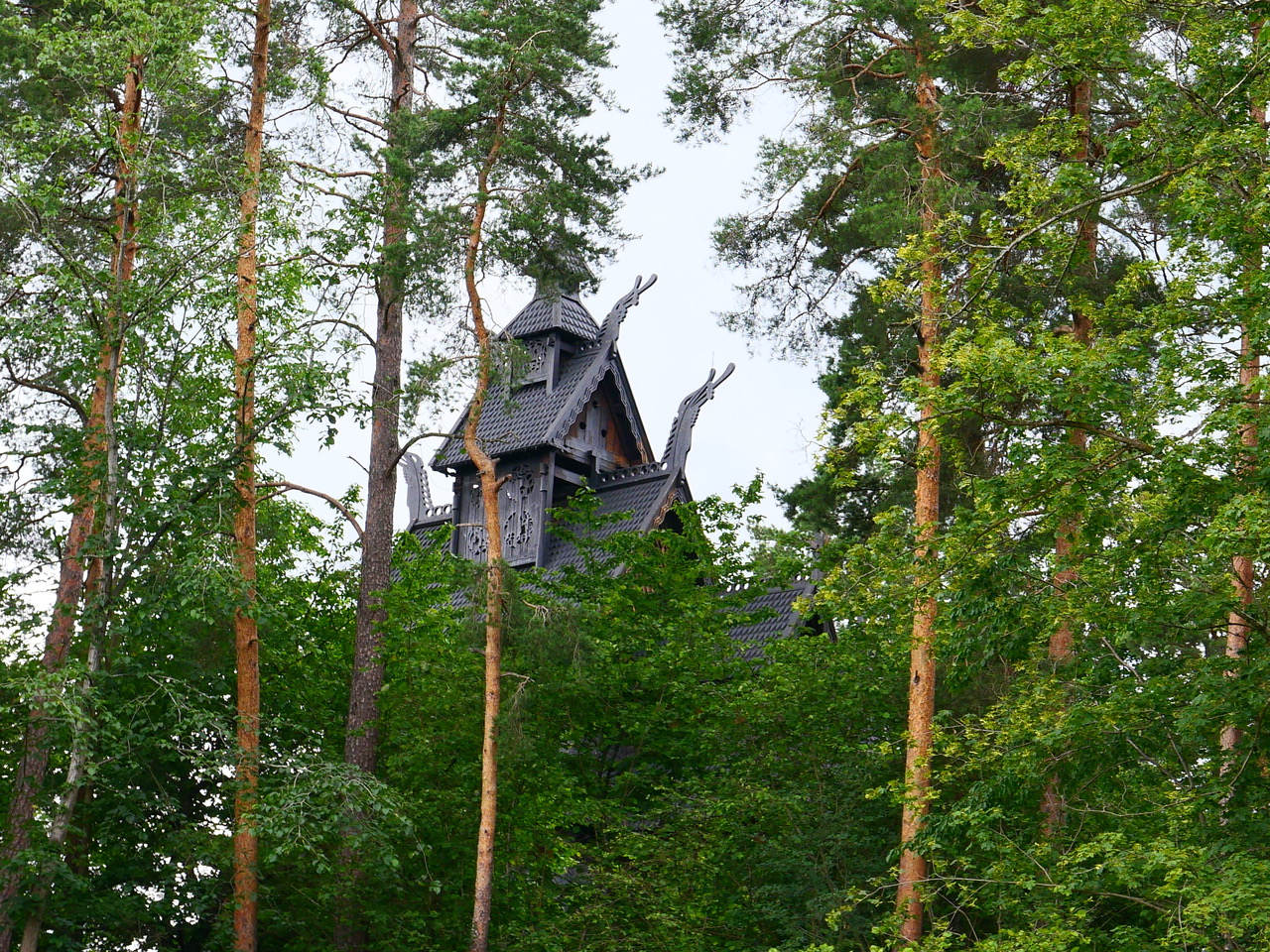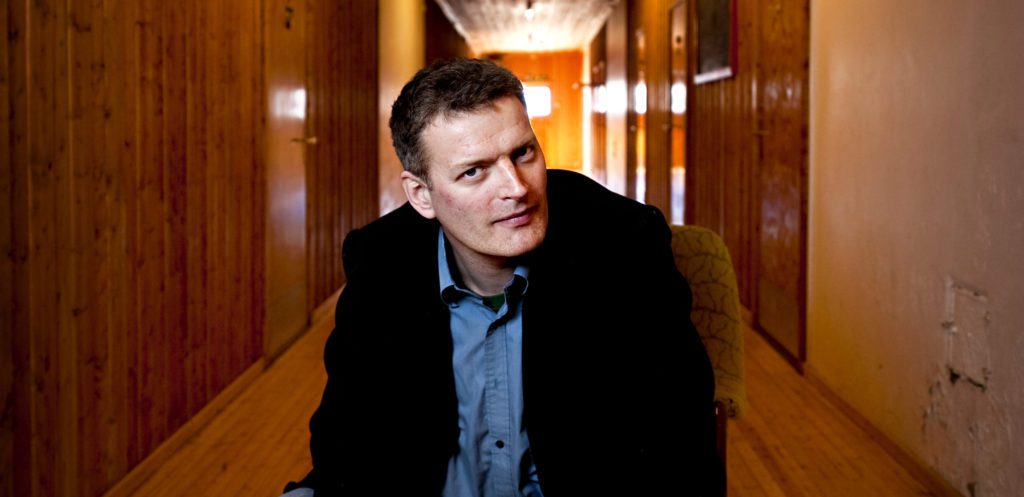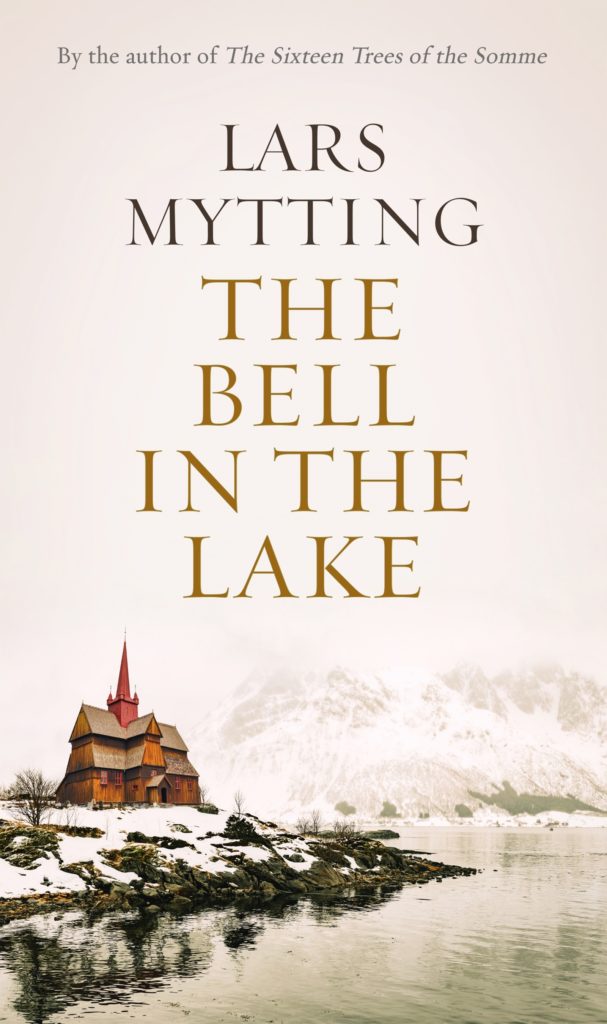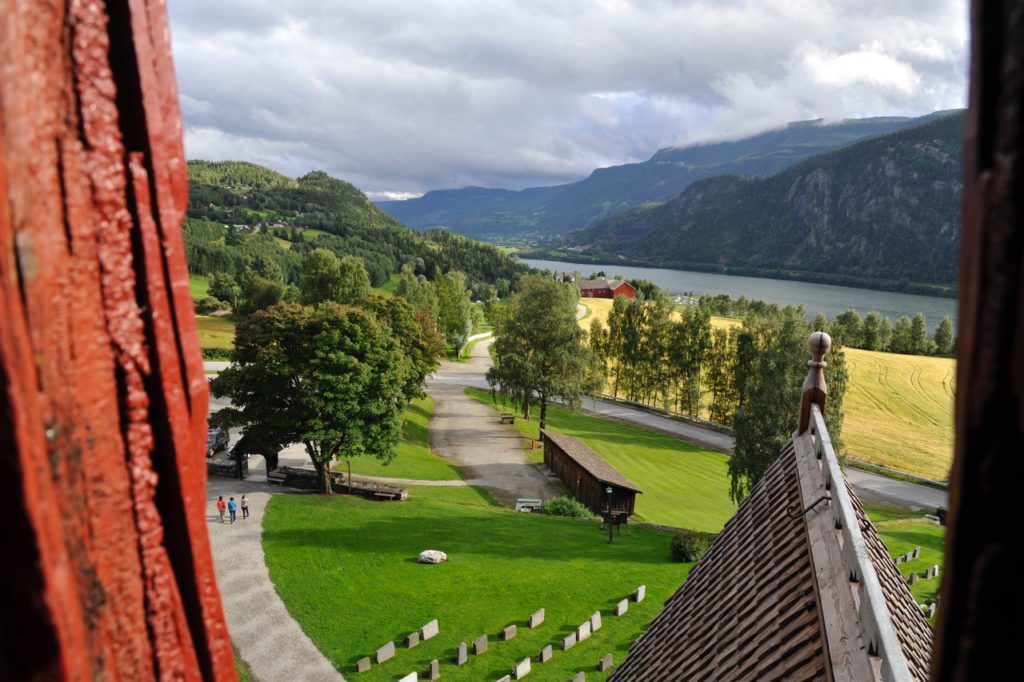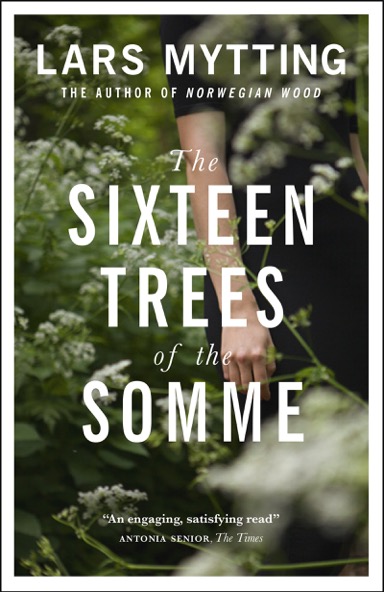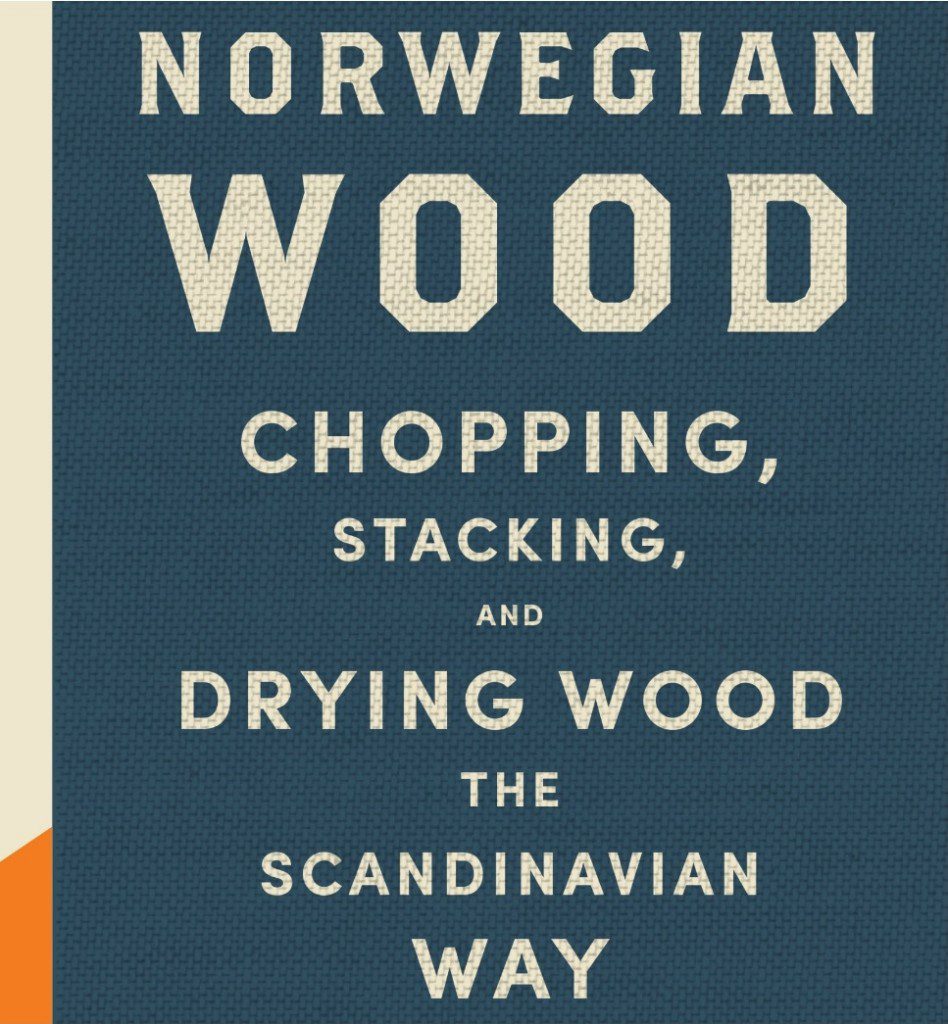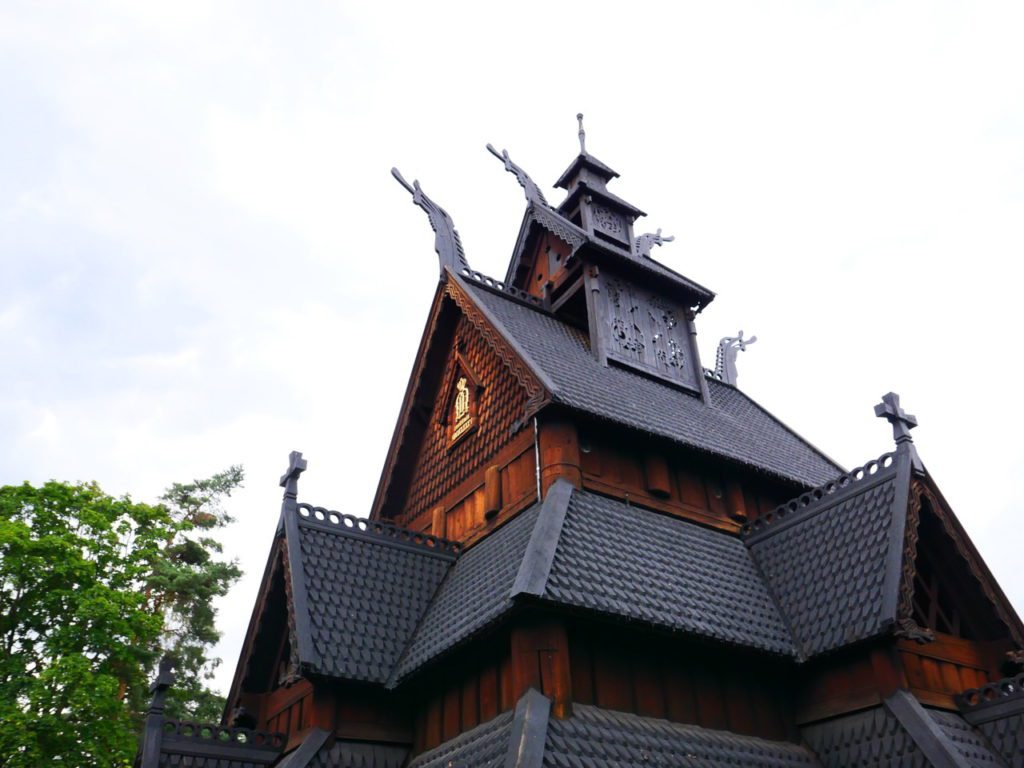In the wake of the worldwide success of Norwegian Wood, his non-fiction tribute to the charms of chopping, sawing and stacking logs, Lars Mytting has turned to whittling history-infused novels of intricate nature. His new novel, The Bell in the Lake, tells the 19th-century story of Astrid Hekne, a forthright girl with ambitions outside of the pastoral constraints of her farming community in the Gudbrandsdalen valley of central Norway. A chance for change comes courtesy of two suitors: the new pastor of the local stave church; and the German outsider who has come to buy and dismantle the church.
As the novel is published in Britain, in an elegant translation by Deborah Dawkin, Mytting talks to Norwegian Arts about love stories, church architecture and writing close to home.
The Bell in the Lake is steeped in the sights and sounds, even flavours, of the region that you live in. Have you always wanted to write something close to home?
I like that the main stage – the nature, the habits, the mood – is rooted in the valley where I grew up, but the places in the novel are entirely made up, like a literary shadow of the real Gudbrandsdalen. I like to link the old oral tradition from home with a set of wild and unpredictable elements, and also to have local ideas challenged by foreigners, for example. Often I thought that a book could be too local, too narrow in its exploration of a small place, but it seems that the opposite is happening – the more local, the more interesting for international readers.
Can you be too close to your subject?
I think so, the matter of importance – at least for novels like mine – is to always keep in mind that you are a storyteller and not demand interest in something that feels too personal, too confessional or too self-therapeutic. I have always favoured telling stories on behalf of others, I enjoy the dream, the really big lies, the exaggeration, and to create a fictional landscape where entirely fictional events can flourish. Of course everything has a source in a writer’s own memories and personality – but I enjoy the rush from when I was a boy, when I experienced something and felt the urge to go to a friend and say: Listen, do you know what just happened?
Would you describe The Bell in the Lake as a love story?
Many people do and I do not oppose it, but for me it is more a story of desire, opposition and strength of wills. If you deconstruct a novel and view it from a mechanical point of view, love is a chaos force that turns all well planned schemes upside down, awakes jealousy and hatred, but during the writing I never make such calculations of the drama, I just imagine the place and the people and try to be their chronicler.
Do you think Astrid, the novel’s protagonist, embodies Norway’s shift towards becoming a modern nation?
Oh, yes, but it is a demanding situation since she also lives in a patriarchal society, with very little room for women who wanted to break with tradition. So much was different in rural Norway at that time – no railroad, no telephone lines, and quite a few elements in the beliefs and habits were actually unchanged since medieval times. And perhaps the most influential on people’s minds was the scarcity of artificial light – no electrical power then, no gas street lamps – in the night everything outside was dark and I think this affected their imagination and beliefs greatly.
What interested you about the German connections to Norway in the 19th century?
It was fun to rediscover how strong the connections actually were, not least because most Norwegians living now are so influenced by the American and English culture (something I personally enjoy a lot, I have a lot of British friends, love Scottish music and own three English cars plus a Triumph motorbike) – but in the timeframe of the novel Germany was the cultural and educational epicentre for Norwegians, and German artists and royalty were the first to recognize the real value of the stave churches – in a time where most Norwegians just tore them down.
To the British, the Stave church is perhaps seen as an emblem of Norway. How are these extraordinary buildings perceived in Norway today?
Oh, we are extremely proud of them. I am happy to say that the ones we have left are admired and well preserved, and we are aware of their place as something unique in world architecture – like a religious viking ship ashore. Norwegians may not be the most Christian people, but we enjoy the church as a meditative place and as a cornerstone of local history. We had perhaps 1,000 stave churches, now just 28 remain – and probably we could have preserved as much as 100-150 of them if we had understood their significance in the years 1800-1880, when a lot were torn down. I often accuse us Norwegians for throwing away our own historical emblems, we constantly thrive for the new, but it is perhaps the fate of a country that builds in wood, not in stone.
Tapestries feature prominently in the novel. I understand that this is drawn from your own search for a lost tapestry?
Yes, there is a very famous tapestry in Gudbrandsdalen that is mentioned in several sources since year 1770. It is said to be made by two sisters in the Dovre region in Norway around year 1600-1650, and they were famous because they were said to be what we today call Siamese twins. We do not firmly know if they or the tapestry existed, or which actual events made this story, but the last trace we have of the tapestry is that it was sold from Trondheim to a London tourist between 1895 and 1900. So there is a good chance it is still in the UK and the quest for it continues.
You had an international bestseller with the non-fiction Norwegian Wood. What made you turn towards fiction after that success?
I had written two novels before Norwegian Wood, but they were not widely translated and are less known – but returning to fiction after a such widely read book as Norwegian Wood was just something I had to do, because I had the ideas of the next novels clearly outlined and they just demanded to be written. That said, I was very nervous about the reception of The Sixteen Trees of the Somme [Mytting’s previous novel]. If it had become a total flop I know the publisher would have asked me to return to non-fiction, and I would perhaps have died as a 90-year old firewood writer.
The book is the first in a trilogy. What are the difficulties – and pleasures – involved in writing a trilogy?
One thing you cannot do in a single volume, not even in a massive 1,000 page novel, is to convey a feeling to the reader of revisiting. The stage, mood and characters is set in the previous book, and there is a certain effect in having to wait for the sequel and imagine what happened next. For the writing itself, a lot is prepared already, but on the other hand you cannot alter the rules set in volume 1. But I enjoy the way I can write about several generations, follow technical advances and social changes, and let all this unfold in a place the reader knows well.
But there are a number of challenges. Volume 2 has to be a novel on its own, but it is also the middle of the big story, so one cannot use all the ammunition the characters have gathered. Also it is tricky to work on something that covers several hundred pages and many interlinked incidents. It has occupied my mind for several years and for years to come, but at least I know the finale of the story, and when the last chapter is written I will go fly-fishing for a month.
Lars Mytting’s books The Bell in the Lake, The Sixteen Trees of the Somme and Norwegian Wood are published by MacLehose Press
Top photo: Gol Stave Church, Norsk folkemuseum, Oslo

